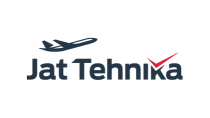Outlook on the Scintillator Global Market to 2026 - by Composition of Material, End Product, Application and Region - ResearchAndMarkets.com
The "Scintillator Market: Global Industry Trends, Share, Size, Growth, Opportunity and Forecast 2021-2026" report has been added to ResearchAndMarkets.com's offering.
The global scintillator market reached a value of US$ 476.5 Million in 2020. Looking forward, the publisher expects the global scintillator market to exhibit moderate growth during the next five years.
Scintillators refer to materials which can absorb high-energy photons and incident particles such as protons, electrons and neutrons. The common scintillator materials include inorganic and organic crystals, organic liquids, and noble and scintillating gases. They assist in converting the gathered energy into visible or ultraviolet range of photons which ensures detection by photomultipliers and photodiodes. Besides this, scintillators help in efficiently determining the energy and time of incident radiation. When compared to other types of radiation detectors, these materials are more sensitive to deposited energy and have a faster response time with simpler, reliable and cost-efficient construction and operation. As a result, they find vast applications in nuclear plants, medical imaging, manufacturing industries, high-energy particle experiments and national security.
In the healthcare industry, scintillators are used to detect and analyze cardiovascular and neurological diseases. With the increasing occurrence of these ailments, the demand for scintillators is increasing across the globe. Moreover, the governments across the globe are implementing stringent regulations on the use of medical devices which, in turn, is pressurizing hospitals and healthcare organizations to adopt technologically advanced scintillation and radiation detectors. Additionaly, these materials are used by security and defense organizations worldwide to tighten homeland security and avert human loss. For instance, the Department of Homeland Security (DHS) in the United States has been supporting the development of solid organic scintillators under the Exploratory Research and Small Business Innovative Research programs for detecting radioactive substances and preventing radiological threats.
Companies Mentioned
- Applied Scintillation Technologies Ltd.
- Argus Imaging Bv Inc.
- Hamamatsu Photonics K.K.
- Hitachi Metals Ltd
- Ludlum Measurements Inc.
- Mirion Technologies Inc.
- Radiation Monitoring Devices Inc
- Rexon Components
- TLD Systems Inc.
- Saint Gobain
- Zecotek Photonics Inc
Key Questions Answered in This Report:
- How has the global scintillator market performed so far and how will it perform in the coming years?
- What are the key regional markets in the global scintillator industry?
- What has been the impact of COVID-19 on the global scintillator industry?
- What is the breakup of the market based on the composition of material?
- What is the breakup of the market based on the application?
- What is the breakup of the market based on the end product?
- What are the various stages in the value chain of the global scintillator industry?
- What are the key driving factors and challenges in the global scintillator industry?
- What is the structure of the global scintillator industry and who are the key players?
- What is the degree of competition in the global scintillator industry?
Key Topics Covered:
1 Preface
2 Scope and Methodology
3 Executive Summary
4 Introduction
4.1 Overview
4.2 Key Industry Trends
5 Global Scintillator Market
5.1 Market Overview
5.2 Market Performance
5.3 Impact of COVID-19
5.4 Market Breakup by Composition of Material
5.5 Market Breakup by End Product
5.6 Market Breakup by Application
5.7 Market Breakup by Region
5.8 Market Forecast
6 Market Breakup by Composition of Material
6.1 In-Organic Scintillator
6.1.1 Market Trends
6.1.2 Market Breakup By Type
6.1.2.1 Alkali Halides
6.1.2.1.1 Market Trends
6.1.2.1.2 Market Forecast
6.1.2.2 Oxide Based Scintillators
6.1.2.2.1 Market Trends
6.1.2.2.2 Market Forecast
6.1.2.3 Others
6.1.2.3.1 Market Trends
6.1.2.3.2 Market Forecast
6.1.3 Market Forecast
6.2 Organic Scintillator
6.2.1 Market Trends
6.2.2 Market Breakup By Type
6.2.2.1 Single Crystal
6.2.2.1.1 Market Trends
6.2.2.1.2 Market Forecast
6.2.2.2 Liquid Scintillators
6.2.2.2.1 Market Trends
6.2.2.2.2 Market Forecast
6.2.2.3 Plastic Scintillators
6.2.2.3.1 Market Trends
6.2.2.3.2 Market Forecast
6.2.3 Market Forecast
7 Market Breakup by End Product
7.1 Personal or Pocket Size Instruments
7.2 Hand-Held Instruments
7.3 Fixed, Installed, and Automatic Instruments
8 Market Breakup by Application
8.1 Healthcare
8.2 Nuclear Power Plants
8.3 Manufacturing Industries
8.4 Homeland Security and Defense
8.5 Others
9 Market Breakup by Region
9.1 North America
9.2 Europe
9.3 Asia Pacific
9.4 Middle East and Africa
9.5 Latin America
10 SWOT Analysis
11 Value Chain Analysis
12 Porters Five Forces Analysis
13 Price Analysis
14 Competitive Landscape
14.1 Market Structure
14.2 Key Players
14.3 Profiles of Key Players
For more information about this report visit https://www.researchandmarkets.com/r/uiqbhk
View source version on businesswire.com: https://www.businesswire.com/news/home/20210512005572/en/





